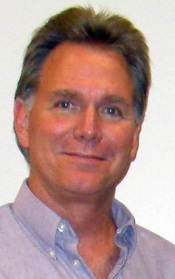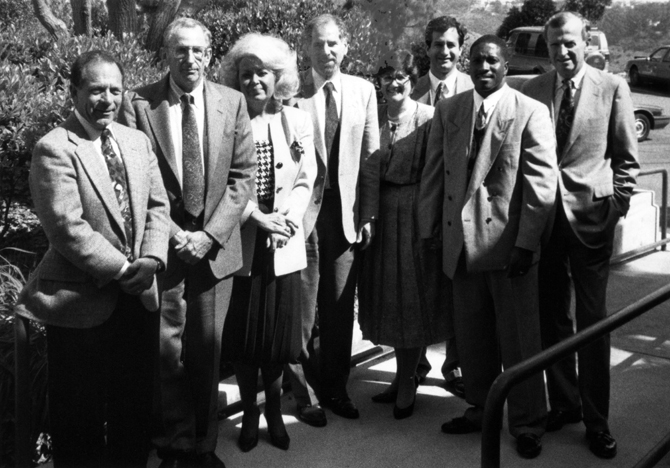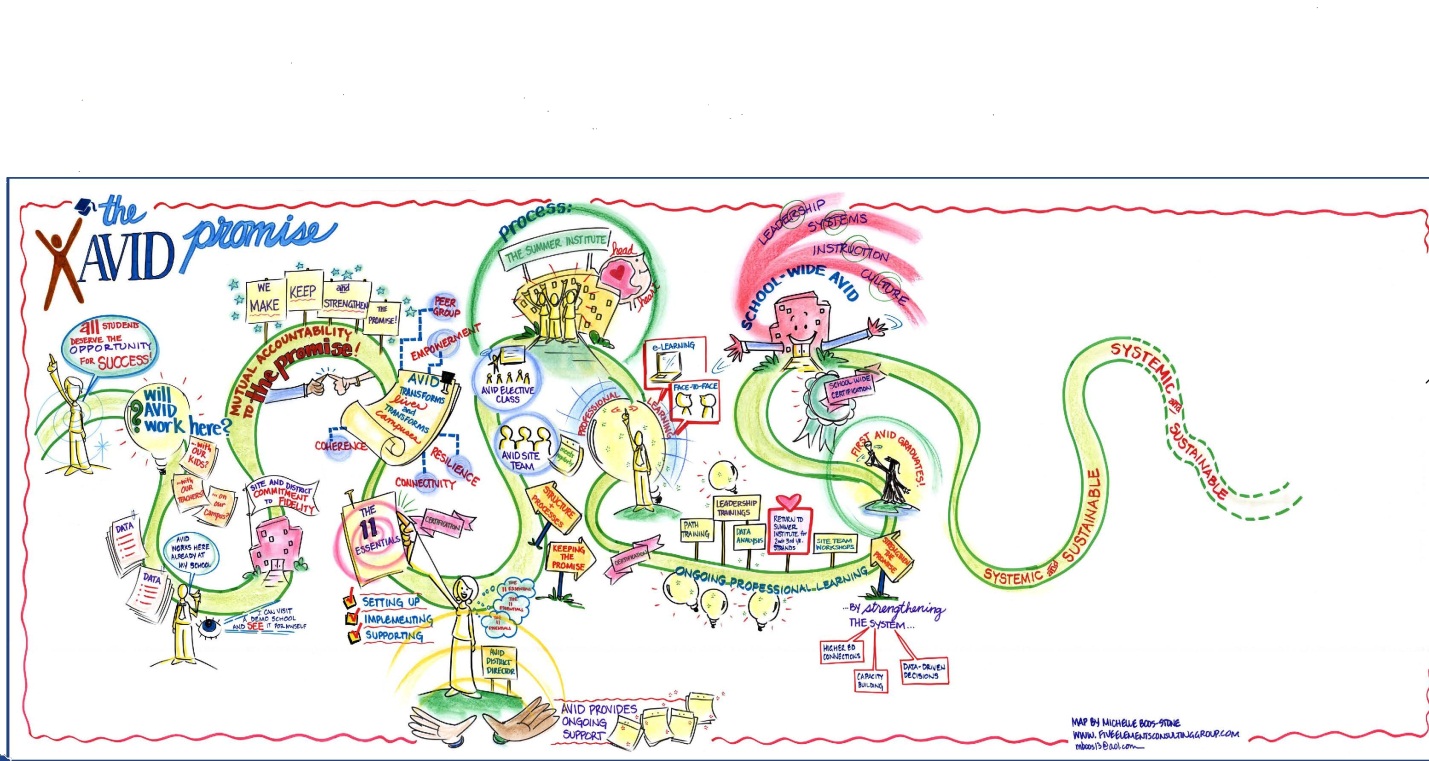AVID Center’s Board: Mapping a Future for College Readiness
 AVID Center
AVID Center  Friday, February 8, 2013 at 10:47AM
Friday, February 8, 2013 at 10:47AM by Rob Gira, Executive Vice President, AVID Center

When Mary Catherine Swanson founded the non-profit AVID Center in 1992, she had already been implementing AVID in schools for 12 years. With increasing interest in the college readiness system, she recognized it was time to establish AVID as a non-profit organization to ensure it was disseminated appropriately. To meet the legal requirements of a non-profit organization, AVID Center needed to have a board of directors to oversee the organization’s charter. Swanson knew that, for AVID to grow appropriately and maintain quality, she would need dedicated and insightful individuals committed to the mission. Starting with the original AVID Center and continuing to today, AVID board members have made valuable contributions.
“Initially, I recruited board members from the San Diego because that was the area with which I was most familiar,” she told me recently. “Education was my area of expertise, and I wanted to build a solid not-for-profit organization that would endure to serve our nation’s students. So our first board had a large number of individuals with strong business backgrounds as well as a commitment to our mission. It is through their pioneering work that AVID has existed for more than 30 years. I don’t know of any other educational reform effort that can match that.”
 The original AVID Center Board, pictured here in 1992, the year it was founded. Funded with monies from the Charles Henry Dana Award, the Board was charged with developing a plan for the expansion of the AVID program. Pictured from left to right: Ed George, Harry Weinberg, Mary Catherine (AVID Founder), Uri Treisman, Ann Navarra, Ron Ottinger, Clarence Fields (an original AVID student) and Tom Page.
The original AVID Center Board, pictured here in 1992, the year it was founded. Funded with monies from the Charles Henry Dana Award, the Board was charged with developing a plan for the expansion of the AVID program. Pictured from left to right: Ed George, Harry Weinberg, Mary Catherine (AVID Founder), Uri Treisman, Ann Navarra, Ron Ottinger, Clarence Fields (an original AVID student) and Tom Page.
I have been fortunate to be part of AVID Center’s efforts since 1994, and our work has benefitted from the support and guidance of many outstanding board members. AVID Center’s board provides direction for our executive director, Jim Nelson, and his executive team as we lead the efforts of our nearly 180 staff members.
As AVID Center’s operation has grown across 45 states and numerous countries, so has the breadth and depth of our work. Jim Nelson, who has been executive director for seven years, worked with board president Todd Gutschow and decided to bring our current board together in a retreat format to provide some focal points for our work to support of AVID Center’s mission over the next five years.
“Our board members help us stay focused on our mission and on the important work we do as a college readiness system,” Nelson said. “I don’t know of any other group that engages elementary schools, secondary schools, and institutions of higher education on the scale we do. That is an ambitious approach that requires exacting coherence in order to help students achieve l at every level. Our board provides great guidance to help us with that.”
In planning the retreat, our board asked us to identify some key thought leaders with whom we wanted to engage in order to push our thinking outside of our “comfort zone,” so that we can best move forward and serve our mission. These subject matter experts were charged with the task of helping our board and staff better understand:
- The demographic changes facing our country and the implications for public schools : Dr. Steve Murdock, Rice University, formerly Director of the U.S. Bureau of the Census and State Demographer for Texas
- What college and career readiness truly entails - today and in the future: Dr. David Conley, University of Oregon, Founder of Center for Educational Policy & Research
- How public schools are/are not successful in preparing young people of color for success in college and beyond, especially in urban settings: Dr. Pedro Noguera, NYU, Executive Director of the Metropolitan Center for Urban Education
- The impact of technology on public schools: Heather Staker, Senior Research Fellow and Michael Horn (Co Author of “Disrupting Class”) Director of Innosight Institute.
All of the experts produced white papers in advance of the retreat, examining AVID’s role in college and career readiness and they provided us with compelling questions which forced us to look deeply into our mission and how we implement it. They looked closely at the strengths of our organization, outlined the challenges we face, and they examined the educational landscape that shapes the future for the nearly 5,000 AVID member schools and 900 districts, and for the growing number of colleges and universities that are now part of our network. Ultimately, of course, our main clients are the 700,000 students we serve, whether they are elementary, secondary, or postsecondary.
During the two days that our board worked together, engaging in dialogue and even debate, they kept their focus on our mission and on students. A unique contribution to the retreat was the artwork of Michelle Boos-Stone, who captured in “real time” the key concepts and issues being presented by our visiting experts and the key issues being grappled with by our board. Notice her visual and colorful grasp of what we called “The AVID Promise.”

It is worth noting that AVID Center’s longest standing board member is Clarence Fields, one of Mary Catherine Swanson’s original AVID students at Clairemont High School, now an executive with Xerox. As an AVID alumnus, Fields has spoken about AVID’s impact at Summer Institutes and elsewhere. His AVID experience has been chronicled in Wall of Fame, the 1996 book about AVID. As Fields told me, AVID continues as an important part of his life, with his leadership role allowing him to help thousands of potential college graduates.
“It is truly an honor to be part of a board that focuses on ensuring that AVID continues to enrich the lives of students and teachers while maintaining our core values,” he said. “Our recent work will continue to expand the reach of AVID while adjusting to the changes that are taking place in education today.”
After two days of hard work, our board, along with 12 AVID Center staff generated many good ideas that to formulate imperatives for AVID Center’s future direction. In the end, we settled on three key imperatives. In upcoming blogs, I will detail each of those imperatives, as well as the contributions from our subject matter experts.
In the AVID way, I’d like to present these imperatives as essential questions:
1) How can AVID Center’s work have more impact on college and career readiness schoolwide?
2) What strategies can we develop to better support urban districts?
3) How can we reach more students directly using technology to better prepare them for college?
The spirit of the two days was captured in a speech made by one of our board member, Dr. Stephen Weber, president emeritus of San Diego State University. When you read his remarks, you will see how well the hearts and minds of our AVID Center board are attuned to the critical work ahead.
Stay with us. We look forward to the next 20 years.

Reader Comments